Source:12 May 2010, 0337 hrs IST,Man Mohan Rai,ET Bureau
LUCKNOW: Rahul Gandhi is well-known for his nightouts in remote villages, sharing meals with poor villagers, but on Tuesday he managed to convince one of the world’s richest person, Microsoft chairman Bill Gates, to do the same in his constituency, Amethi.
Although no official confirmation was available, sources said that Mr Gandhi was likely to take Mr Gates to Simara village in Amethi, where he had earlier taken the British Foreign Secretary David Milliband, to spend a night with a Dalit villager, Shivkumar Kori, in his hut.
Mr Gates along with the Congress MP landed at the Fursatganj airstrip on Tuesday morning, then drove to Bahadurpur village, near Jais town, where the Microsoft boss addressed members of a self-help group of women, Rajiv Gandhi Mahila Vikas Pariyojana.
Explaining them the importance of computer education, Mr Gates promised the villagers to try and develop Amethi and Rae Bareli (Congress president Sonia Gandhi’s constituency) as an IT hub.
Mr Gandhi took Mr Gates to several villages in the area where the Bill and Melinda Gates Foundation, funded by the private fortune of the Microsoft founder, has been working for the last few years.
About a month ago, Ms Melinda Gates had also visited some villages in the Amethi-Rae Bareli region. On her visit she had committed Rs 250-crore for various health programmes in Uttar Pradesh.
While no confirmation was available, the Bill and Melinda Gates Foundation is expected to collaborate with the Rajiv Gandhi Charitable Trust for running various welfare programmes in the two constituencies. Several members of the Foundation, regarded as one of the biggest charitable trusts in the world, were also part of the visit.
Mr Gates visit to the area was kept a closely guarded secret with even Congress party leaders were unaware of the programme.
Mr Gandhi has over the past couple of years been travelling to remote villages where he spends the night talking to villagers about their problems and sharing meals with them. He had earlier got British foreign secretary David Milliband to do the same in Simara village in Amethi where they spent the night in the ramshackle hut of Shivkumar Kori.
Sources said that Mr Gates is also expected to spend the night at the Simara village to take a closer look at the village life. He will leave for New Delhi on Wednesday morning, while Mr Gandhi is expected to stay back in Amethi.
Thursday, May 13, 2010
Tips to manage EMIs effectively
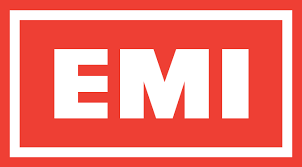
Source:9 May 2010, 0512 hrs IST,ET Bureau
Many borrowers who opt for the floating rate of interest face financial stress whenever the rates move upwards. An increase in the interest rate translates into an increase in the EMIs. If the homeowner is under financial stress, home loan repayments become a nightmare. This is because EMIs are as high as 40 percent of a borrower's takehome income on an average.
Here are a few tips to manage EMIs effectively:
Prepay
Partial prepayment could reduce the high interest cost on that part of the loan. If you have any other asset or property that is not yielding anticipated returns, the option to sell it off and prepay the home loan exists. However, foreclosing a loan ahead of the tenure might attract a prepayment penalty of around two percent. If borrowers fear defaulting under the burden of increasing rates, prepaying is an option worth considering.
Negotiate
The borrower can try convincing the lender about his financial crunch and negotiate for a lower rate. You can work out a more comfortable repayment option with the lender.
Switch
If another lender offers very low rates compared to what you are paying towards your home loan, consider moving to the other lender. Home loan is a financial commitment that spans over long tenures, say 10-15 years. Weigh in the switching cost and penalties. Do your homework on the new lender. There is little the borrower can do if the new lender hikes the rate within two months of switching.
Manage finances
Chalk out a plan to manage your existing debts, regular monthly expenses and contingencies . Do not indulge in new debts and delay any new purchase plans. Spend judiciously and avoid splurging till you are out of debt.
Tata Steel in list of world's most admired companies
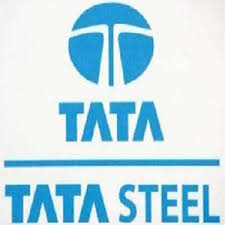
Source:12 May 2010, 1930 hrs IST,PTI
NEW DELHI: Tata Steel on Wednesday said that Fortune Magazine and management consultant Hay Group have ranked it as one of the world's 10 "most admired" companies this year.
"Tata Steel, this year, has been ranked among the world's top ten of the "Most Admired Company" rated by Fortune Magazine and the Hay Group. The award has been bestowed upon the company in the industry-metal category," Tata Steel said in a statement here.
Tata Steel joins firms like Apple, GE, Singapore Airlines, Alcoa and Thyssen Krupp on the top 10 list, it added.
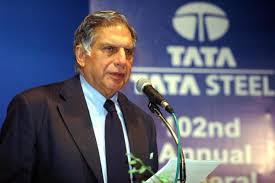
"The rankings were based on many factors, including innovation, people management, use of corporate assets, financial soundness, long-term investment and global competitiveness," it added.
Tata Steel said that global recognition will "further strengthen" its resolve to ensure the overall development and well-being of its employees.
"We are happy that (we have) been recognised by our peers and analysts in the global ranking of most admired companies," Tata Steel managing director H M Nerurkar said.
Credit & Debit Card information frauds fetch hackers big money

Source:3 May 2010, 0221 hrs IST,Debjoy Sengupta,ET Bureau
KOLKATA: While economies went into a tailspin in 2009, credit card information, wrongfully extracted by hackers, commanded a huge premium in the grey market — more than double the price they did a year earlier.
In some cases, data encrypted on the magnetic strip of credit cards were being sold at six times more. The username and password of sites like PayPal that accountholders can withdraw cash from, were up by $600 per account.
On the other hand, bank credentials — account numbers, net banking transaction access codes and personal account passwords — appear to have become a little cheaper over the past one year. So are e-mail passwords over the past one year.
For instance, leading web security firm Symantec says credit card information — along with the card verification value (CVV) — was $30 per card during 2009 against $12 in 2008. CVV is the three-digit number on the opposite side of the card and is a must for making online transactions.
Data encrypted on the magnetic strip of a credit card, referred to as credit card dumps, contains the primary account number and the expiration date as well as card-holder’s name. Each credit card issuer has its own standards for encoding this information. The highest price for such information was $140 per card in 2009 against $25 per card in the previous year.
User name and password of sites, including PayPal, referred to as cash-out services, were selling at 50% of the total value of the cash that could be siphoned off from a single account during 2008. During 2009, the prices increased $600 flat.

Bank account information, however, dropped from $1,000 in 2008 to $850 in 2009. Over the same period, e-mail accounts sold at $20 on the higher side during 2009 against $30 in the previous year. Officials from Symantec said: “Credit card info and bank accounts still top advertised items in the underground economy. However, credit card dumps saw a marked increase in advertisements.”
Abhinav Karnwal, product marketing manager, APEC Trend Micro, said: “Popularly called underground economy, there are a set of hackers who deploy various malicious methods to extract sensitive data from unsuspecting PC users. Having extracted a sizeable volume, they advertise on various sites to sell them. The potential of financial gain from these data determines the price for any set of information.”
There is another set of hackers who use such stolen information to extract money “The ones that steal the information may not always want to use them and, therefore, remain unidentified. Hence, they are satisfied with selling them in the underground economy. The ones that buy them are capable or intend to take more risks than the ones that steal the information... Interestingly, there are two distinct sets of people,” said Mr Karnwal.
“Prices of credit card information have gone up because credit limits offered were raised over the past one year. Prices of bank account information have declined because it is becoming increasingly difficult to use bank information to siphon off funds,” he explained.
He added: “Prices are also dependent on factors like average credit limits on cards in specific countries. For example, credit card information in the US will fetch higher prices than those in India or Bangladesh. In contrast, bank account or debit card information from countries like India will fetch more money than in the US since Indians have a propensity to save and, therefore, likely to have more funds in their bank accounts than an average US citizen,” explained Mr Karnwal.
You’ll get to switch insurers, retain benefits too

Source:13 May 2010, 0253 hrs IST,Debjoy Sengupta,ET Bureau
KOLKATA: Portability in health insurance is likely to become a reality soon. The General Insurance Council has recently submitted its revised format for portable health covers to the Insurance Regulatory & Development Authority (Irda). Insurers will be able to sell such health covers once the regulator has approved it. And policyholders will be able to switch their health cover providers with the same benefits retained once they have bought this cover.
Earlier, the council — a representative body of all general insurance companies — had submitted a model portable health cover with the regulator. But it did not find much favour with the regulator who had asked the Council to rework the insurance cover to include a wider section of individuals and offer increased coverage. Following the directive, the Council has increased the maximum age of entry for the policy from 40 years to 65. Sum assured for the policy was also enhanced from Rs 1 lakh to Rs 2 lakh.
Theoretically, a portable health insurance policy refers to the ability to switch health cover providers at will, yet retain bonuses accrued and have pre-existing diseases covered. Health insurance providers offer bonuses in the form of a reduced premium or increased covers with each claim-free year. After four years, pre-existing diseases also get covered. The earlier policy framed by the Council did not cover pre-existing diseases.
According to a source involved in the process, a Rs 1 lakh cover will be available at Rs 1,000 for an 18-year old. However, the premiums will be higher for higher age of entry.
Interestingly, to avail hassle free portability, one will have to buy this particular health cover. For other health products, insurers have the option of taking a call on a case-to-case basis.
However, for this policy, all insurers have to oblige in case the policy holder wants to switch companies.
Hence, in effect, it might mean that portability will be available when an individual buys this policy from any insurer. Which means that one may have to start afresh with the new standard policy. It will not have any accrued bonuses and will not cover pre-existing diseases from day one. Under this policy, bonuses will start accruing after a year and pre-existing diseases will be covered after four years.
It may be good news for individuals planning to buy a new cover, but senior citizens — those who bought their mediclaim policies long back, by virtue of which they enjoy bonuses and have pre-existing diseases covered — may not be excited.
More insurance companies under CBI scanner for irregularities
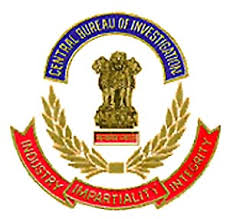
source:13 May 2010, 1115 hrs IST,IANS
LUCKNOW: The Central Bureau of Investigation (CBI) will initiate a probe against three insurance companies in connection with alleged financial irregularities and forgery in the Universal Health Insurance Scheme (UHIS), sources said Thursday.
During its raids at the Lucknow and Varanasi offices of the National Insurance Company (NIC), the Lucknow branch of CBI's anti-corruption wing had Saturday seized over 100 fake medical insurance certificates and detected financial anomalies over Rs 30 lakh.

It is now going to investigate three more companies, officials said.
The UHIS scheme is meant to provide medical benefits strictly to the below poverty line population. While the person opting for the scheme has to provide Rs 100 per year, the central government provides Rs 300 and the insurance company offers free medical treatment up to Rs 30,000.
Preliminary investigation indicates other insurance companies entrusted with the task of running the central government's scheme may also be involved in embezzlement of government funds. The several health cards were issued to those above the poverty line, sources added.
According to officials, poverty line for the urban areas is Rs.296 per month and for rural areas Rs 276 per month.
Accounts opened by Foreign Nationals and Foreign Tourists-FAQ
| |
| Source:RBI |
RBI:Guidelines on Note Authentication and Fitness Sorting Parameters
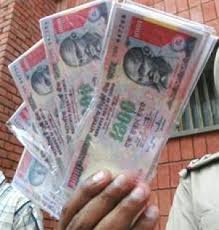
Source::RBI::May 13,2010
RBI on on Tuesday 11th May 2010 issued Guidelines on Note Authentication and Fitness Sorting Parameters, highlights of the guidelines are as follows:
Date: May 11, 2010
Installation of Note Sorting Machines – Note Authentication and Fitness Sorting Parameters
RBI/2009-10/459
DCM(R&D)No.G-26/18.00.14/2009-10
May 11, 2010
The Chairman & Managing Director /
Chief Executive Officer
All Scheduled Commercial Banks
(including RRBs)
Scheduled State Co-operative Banks /
Scheduled (Primary) Urban Co-op Banks
Dear Sir/Madam
Installation of Note Sorting Machines –
Note Authentication and Fitness Sorting Parameters
Please refer to paragraph 5 of our circular DCM. No. Cir. NPD. 3161/09.39.00 (Policy)/ 2009-10 dated November 19, 2009 on the captioned subject enclosing therewith our Directive DCM. No. Dir. NPD/3158/2009-10 of date.
2. We had, vide the above circular, mentioned that machines installed by banks for processing banknotes should conform to the standards / parameters prescribed by Reserve Bank of India from time to time. Accordingly, the draft guidelines on ''Note Authentication and Fitness Sorting Parameters'' were placed on our website on December 23, 2009 seeking comments / views. After taking into account the comments received from various stakeholders including banks, equipment manufacturers and members of public, the guidelines on ''Note Authentication and Fitness Sorting Parameters'' have been finalized, which are enclosed herewith.
3. The guidelines may be implemented with immediate effect.
4. Please acknowledge receipt.
Yours faithfully
(S.K. Maheshwari)
General Manager
Encl : 3
Guidelines on Note Authentication and Fitness Sorting Parameters
Installation of Note Sorting Machines – Note Authentication and Fitness Sorting Parameters
RBI/2009-10/459
DCM(R&D)No.G-26/18.00.14/2009-10
May 11, 2010
The Chairman & Managing Director /
Chief Executive Officer
All Scheduled Commercial Banks
(including RRBs)
Scheduled State Co-operative Banks /
Scheduled (Primary) Urban Co-op Banks
Dear Sir/Madam
Installation of Note Sorting Machines –
Note Authentication and Fitness Sorting Parameters
Please refer to paragraph 5 of our circular DCM. No. Cir. NPD. 3161/09.39.00 (Policy)/ 2009-10 dated November 19, 2009 on the captioned subject enclosing therewith our Directive DCM. No. Dir. NPD/3158/2009-10 of date.
2. We had, vide the above circular, mentioned that machines installed by banks for processing banknotes should conform to the standards / parameters prescribed by Reserve Bank of India from time to time. Accordingly, the draft guidelines on ''Note Authentication and Fitness Sorting Parameters'' were placed on our website on December 23, 2009 seeking comments / views. After taking into account the comments received from various stakeholders including banks, equipment manufacturers and members of public, the guidelines on ''Note Authentication and Fitness Sorting Parameters'' have been finalized, which are enclosed herewith.
3. The guidelines may be implemented with immediate effect.
4. Please acknowledge receipt.
Yours faithfully
(S.K. Maheshwari)
General Manager
Encl : 3
Guidelines on Note Authentication and Fitness Sorting Parameters
1. Introduction
2. Applicability
4. Fitness Sorting
As a part of fitness sorting, notes with any visual or physical defects are to be sorted as unfit as per the criteria set out in Table 1.
A fit note is a note that is genuine, sufficiently clean to allow its denomination to be readily ascertained and thus suitable for recycling. An unfit note is a note that is not suitable for recycling because of its physical condition or belongs to a series that has been phased out by Reserve Bank of India. All the fitness parameters laid down in this document are to be evaluated individually. A note must pass all the fitness parameters to be considered fit for recycling.
These parameters provide the minimum standards for cash handling machines used by banks (hereinafter called ‘the machines’). Notes can only be recycled / reissued if they are evaluated as genuine and fit according to these parameters. Authenticity check is a prerequisite for fitness sorting. Fitness sorting can be done only in case of genuine notes. The machines shall be able to identify and separate suspected counterfeits and notes which are unfit for circulation in terms of these standards in a reliable and consistent fashion.
The Reserve Bank of India phases out certain series (issue) of notes from circulation from time to time. These notes, though considered legal tender unless otherwise specified, are unfit for recycling. As and when the Reserve Bank of India decides to phase out a specific series (issue) of a specific denomination of notes, the machines shall sort all the phased out notes as unfit, irrespective of their physical condition.
These parameters are applicable to machines operated by banks, either directly by their staff or indirectly by their agents. These machines can be of any of the following:
- machines which check the authenticity and fitness of notes, i.e. note processing machines / note sorting machines, and
- machines which check only the authenticity of notes, i.e. note authentication machines. All these machines shall classify the individual notes as either genuine or suspect.
The machines shall perform authenticity check with reference to the features of genuine notes as disclosed by the Reserve Bank of India from time to time. Any note which is not found to be having all the features of a genuine note shall be classified by the machine as suspect.
As a part of fitness sorting, notes with any visual or physical defects are to be sorted as unfit as per the criteria set out in Table 1.
| Table 1: Sorting Criteria | ||
Sl. No. | Feature | Criteria |
1 | Soiling | General distribution of dirt across the entire note |
2 | Limpness | Structural deterioration resulting in a marked lack of stiffness |
3 | Dog-ears | Corner folds |
4 | Tears | Lengthwise and crosswise cuts |
5 | Holes | Holes of a specific diameter |
6 | Stains | Localised concentration of dirt |
7 | Graffiti | Deliberate graphic alteration of the note |
8 | Crumples | Multiple random folds |
9 | Decolouration | Lack of ink on part or whole of the note, e.g. a washed note |
10 | Folds | Folds reducing the length or width of the note |
11 | Repair | Note repaired using adhesive tape/ paper/ glue |
(i) Soiling
(ii) Limpness Limpness relates to structural deterioration or wear resulting in a marked lack of stiffness in the note paper. Notes with a very low stiffness shall be sorted as unfit. Notes with very low stiffness of paper, i.e. with paper which is worn out in circulation or mechanically mutilated shall be sorted out as unfit. Detectors for paper quality shall be adapted to the same level as for soiling. (iii) Dog-Ears Notes with dog-ears with an area of more than 130 mm² and a minimum length of the smaller edge greater than 10 mm shall be sorted as unfit. Chipped notes shall also be sorted as unfit. (iv) Tears Notes exhibiting at least one tear at the edge shall be classified as those having tears. Notes with tears larger than those indicated in Table 3 shall be sorted as unfit.
* Measured by drawing a straight line from the peak of the tear to the edge of the note where the tear begins (rectangular projection), rather than measuring the length of the tear itself. (v) Holes This refers to notes with at least one visible hole. Notes with holes with area exceeding 10 mm² shall be sorted as unfit.(vi) Stains Stains are visible markings which are not part of the feature of a note. Notes shall be detected as unfit if localized - i.e. with limited extension – stain can be recognised on its surface. In case the total area covered by stains exceeds 500 mm², the note shall be sorted as unfit. A note with a single stain covering an area of more than 200 mm² shall be sorted as unfit. Both the obverse and the reverse of the note shall be checked for stains.(vii) Graffiti Graffiti refers to deliberate graphic alteration of the note with for example, figures or letters. Fitness sorting criteria in case of graffiti shall be the same as those for stains. Both the obverse and the reverse of the note shall be checked for graffiti. (viii) Crumples/ Folds Crumpled / folded notes shall be sorted as unfit if the folds result in reduction of the original note in length or width greater than 5 mm. (ix) Decolouration Notes affected by decolouration shall be sorted as unfit if the ink is partially or wholly missing from its surface. Both the obverse and the reverse of the note shall be checked for decolouration.(x) Repair A repaired note is created by joining parts of the same note together, for example, by using extraneous matter such as tape, paper or glue. Notes with the following types of repairs shall be sorted as unfit:
5. Mutilated, Imperfect and Mismatched Notes A mutilated note is note, of which a portion is missing or which is composed of more than two pieces. An imperfect note is a note, which is wholly or partially, obliterated, shrunk, washed, altered or indecipherable but does not include a mutilated note. A mismatched note is a note, which has been formed by joining a half note of any one note to a half note of another note. Such notes shall be classified as unfit. | |||||||||||||||||||||||||||||||||||||||||||||||||||||||||||||||||||||
Star Health Insurance.

Mr V. Jagannathan, Chairman and MD, Star Health Insurance.
Source:BL,M. Ramesh,Bridget S. Leena,Photo: Bijoy Ghosh,May13,2010
For decades, Tamil Nadu has been a welfare state. The legendary Kamaraj, as Chief Minister, conceived the noon-meal scheme for children, which served the dual purpose of ensuring nutrition to children and checking school drop-out rate.
This scheme has been replicated in many other States and while no study seems to have been conducted quantifying the benefits, the enormity of the benefits itself is not inconceivable.
Similarly, the public distribution system in Tamil Nadu, while not perfect, is visibly benefitting the poor.
In keeping with this ‘welfare state' trend, the Government of Tamil Nadu last year announced the ‘Kalaignar Maruthuva Kaapeettu Thittam', an insurance scheme for people ‘below poverty line'. The scheme is simple: The Government pays the insurance premium on behalf of the poor. The insurer is selected through a tendering process to ensure that the Government does not over pay.
There is a Centrally sponsored insurance scheme for BPL families called the Rashtriya Swasthya Bima Yojana (RSBY), which was introduced on April 1, 2008. But the beneficiaries are entitled only to hospitalisation coverage for up to Rs 30,000. The Union Government pays 75 per cent of the insurance premium, while the rest is to be picked up by the State governments. Needless to point out, the Kalaignar Maruthuva Kapeethu Thittam improves upon the RSBY significantly.
A similar scheme was first implemented in Andhra Pradesh. But credit is due to the Tamil Nadu Government for not only adopting the scheme quickly, but also (unlike Andhra Pradesh) launching it at one go in all the districts of the State.
In Tamil Nadu, the programme is implemented with a consortium of insurers. India's first standalone health insurance company, Star Health and Allied Insurance Ltd, has a 42 per cent share of the premium paid by the Government.
In an interview to Business Line, Star Health's Chairman and Managing Director, Mr V. Jagannathan, spoke about the merits of the scheme.

Excerpts from the interview:
I would like to say that each scheme has its own merits. For all practical purposes both the schemes cover the BPL population and provides coverage for all major surgical procedures. While the Tamil Nadu scheme operates for 4 years, AP scheme is renewable every year. In case of Tamil Nadu, the scheme was introduced in all the districts in one stroke.
Can you please describe the coverage and benefits of the scheme?
In the case of the Tamil Nadu scheme, though the coverage is Rs 1 lakh for a family, for most of the major diseases, such as of heart, the cover is higher — Rs 1.25 lakh and Rs 1.5 lakh. So also for kidney transplantation etc., increased amount is given. Though the hysterectomy was not covered initially, coverage has been extended for this surgery too. In birth defects, cochlear implantation is covered to some extent.
Is the actuarial science behind the scheme sound?
As regards the actuarial science behind the scheme, it has to be evaluated only at the end of the second year since the number of surgeries are now picking up day-by-day and the average strike rate has gone up to Rs 2 crore plus per day. In the initial stages the claims were not up to that extent as the cards distribution was going on. The public is being educated and becoming aware of the scheme now and getting adequate benefits of the scheme.
Are you making money? How is your claims experience?
I will not be in a position to answer at this stage since this is a four-year scheme there will be upside and downside and the correct position will be made known only by the end of the fourth year.
What is Star Health doing to check the unhealthy practices often associated with heath insurance?
We have a police officer in every district and also one Chief Vigilance Officer in the rank of DIG (IPS Retired officer) at the corporate office. They systematically visit these hospitals and give us information of activities of the network hospitals. Every hospital has a representative of the STAR as a Liaison Officer to take care of the patients as well as the company's interests.
Apart from that, the system is devised such that all the claim documents are uploaded and examined by expert doctors and pre-authorisation is given. I should also mention that this process does not take much time since the entire operation is online.
SBT extends Aiswarya home loan scheme

Source:BL Bureau,Thiruvananthapuram, May 11,2010
State Bank of Travancore (SBT) has extended the period of the Aiswarya Home Loan Scheme until June 30.
According tor the scheme, loans availed during the period would be charged at the rate of eight per cent (fixed) for the first year, nine per cent (fixed) for the next two years for loans up to Rs 30 lakh and 9.5 per cent (fixed) for loans above Rs 30 lakh.
The applicable rates for these loans thereafter would be 2.50 per cent below prime lending rate (floating) for loans up to Rs 30 lakh and two per cent below PLR for loans above Rs 30 lakh.
A minimum amount of Rs 5 lakh and a maximum of Rs 30 lakh are available under the overdraft scheme. Under the term loan scheme, the maximum available amount will be Rs 3 crore in the urban-metro areas and Rs 50 lakh in the rural semi-urban areas.
Citi India announces 5 senior appointments

Source BL:PTI:May 12,2010
MUMBAI: Financial services major Citi India on Tuesday announced the appointment of five top executives across its Strategy, Risk, Human Resources and Legal functions.
Citi India has appointed Mr Anuratna Chadha as Head of Strategy for India with additional responsibility for Citi’s Microfinance business, Mr Stephen Cronin as Head of Human Resources and Mr Piyush Agrawal as Head of Risk for Citi’s Institutional busines s in the country, a press release said.
Also, Mr Sandip Beri has been named as the Head of Legal and Mr Munish Nagpal as Legal Head of Citi’s Capital Markets Origination and Global Banking businesses here, it said.
Citi India has about 20 crore customers and has business operations in more than 140 countries worldwide. — PTI
Cautious banks, MFs turn to govt securities

Source:BL:C. Shivkumar,Bangalore, May 12,2010
| State development loan rates drop as risk aversion spreads. |
Narrowing spreads
Spreads between 10-year sovereign paper and the State development loans have dropped to about 40 basis points
SDL yields at Tuesday's auction as a result of the risk aversion dropped to about 8.19 per cent.
The State Government securities have become attractive to banks and mutual funds as financial markets turned cautious on the unfolding crisis in Europe. Spreads between 10-year sovereign paper and the State development loans (SDL) have dropped to about 40 basis points compared to twice that during the last fiscal on the back of large institutional purchases. SDLs are market borrowings by the State governments and are sovereign-guaranteed.
SDL yields at Tuesday's auction as a result of the risk aversion dropped to about 8.19 per cent. The weighted average yield on 10-year sovereign papers is currently 7.78 per cent. Narrow spreads also imply reduced borrowing costs for the State governments.
The IDBI Gilts's Head of Treasury, Mr S. Srinivasa Raghavan, said, “Corporate bond issuances have also reduced. In this situation, SDLs have become attractive.” The credit risk aversion showed up in widening spreads between the Government securities and high-rated private sector corporate debt papers. The spread for typical sovereign and corporate debt paper is currently close to about 100 basis points. In March end, the spreads had dropped to as low as 49 basis points.
credit offtake
The liquidity overhang in the banking system also partly contributed to the narrowing spreads. The liquidity overhang was evident from the recourse to the reverse repurchase window. At Tuesday's liquidity adjustment facility auctions, recourse to the reverse repurchase window amounted Rs 32,470 crore.
In addition, the surfeit of liquidity in the financial markets was also contributed by the low credit offtake. The first half of the financial year typically tends to be period of low credit offtake.
The European crisis has also prompted some corporates to hold back capital expenditure. According to the Reserve Bank of India's data credit offtake, this fiscal year so far was in the negative by Rs 25,657 crore. The negative credit offtake in turn shows up in high investment deposit ratios.
On the other hand, incremental ID ratios this fiscal year so far is up by over 250 per cent (Investments this fiscal so far are Rs 54,679 crore as against aggregate deposits of Rs 20,173 crore).
Deposits
Banks are beginning to increase taking bulk deposits - in particular through certificates of deposits (CDs). CD rates for 12 months are down to 6 per cent or 50 basis points lower than one year retail term deposit rates.
Three-month CD yields were even lower at barely 4.25 per cent. Typically corporate capital expenditure is initially funded through internal resources before bank credit draw down. But low CD yields are a pointer that a pick up in credit offtake was also unlikely in the immediate future, bankers said.
In addition to the Government securities, some aggressive banks are also beginning to parking resources again in mutual funds. For the latest reporting fortnight, such investments amounted to Rs 1.07 lakh crore or a Rs 50,000-crore increase over the end of the last fiscal year (March 26, 2010).
This is being done to keep the yield on investments slightly above the cost of short-term liabilities in a low credit offtake regime.
6 million credit cards cancelled in 2009-10
Source: BL May 13,2010,N.S. Vageesh
| Rising defaults, tighter norms make banks wary. |

Banks cut down sharply on issuing credit cards and also closed a number of cards in 2009-10. Six million credit cards or about a quarter of the total number of cards a year ago went out during the last fiscal.
The number of cards in circulation as of March 2010 was 18.3 million, a level last seen about five years ago, data from the Reserve Bank of India show.
SLIDE STARTED TWO YEARS AGO
The slide began just about two years ago, after the credit card industry touched a peak level of 27 million cards in June 2008. In the next nine months, the industry cut about three million cards.
The pace then accelerated last fiscal particularly in March 2010, when nearly two million cards went out of use.
Rising defaults in the credit card industry as well as unsecured personal loans portfolio by customers as a consequence of the slowdown in the economy a year ago forced a number of banks to rethink their growth strategy. Besides, regulatory warnings and court strictures about aggressive recovery practices of many banks also forced them to go slow in this business.
DE-RISKING EXERCISE
Apart from cutting down new issuances, banks also began to cut credit limits for existing customers as part of a de-risking exercise.
Accounting rules that required banks to set apart more capital against unused credit limits also forced banks to cull out inactive and risky cards.
Some of those measures are reflected in the 4 per cent drop in card spends in 2009-10. Total credit card spends fell to Rs 62,852 crore.
TOP GUN PIPES DOWN
Reflective of the decline in the card industry, ICICI Bank, the top card issuer, cut the number of its cards by a third during the last one year.
Today, it has about five million cards against a peak of about nine million cards two years ago.
Tighter norms
As part of its tighter norms, the bank issues cards very selectively — only to customers with whom it has a long-standing relationship.
At its peak, the bank was issuing over two lakh cards a month.
That's down to less than a thousand a month now.
The days of having unsolicited credit cards thrust on you are now over. In fact, getting a card may actually become a bit difficult!
Subscribe to:
Comments (Atom)

